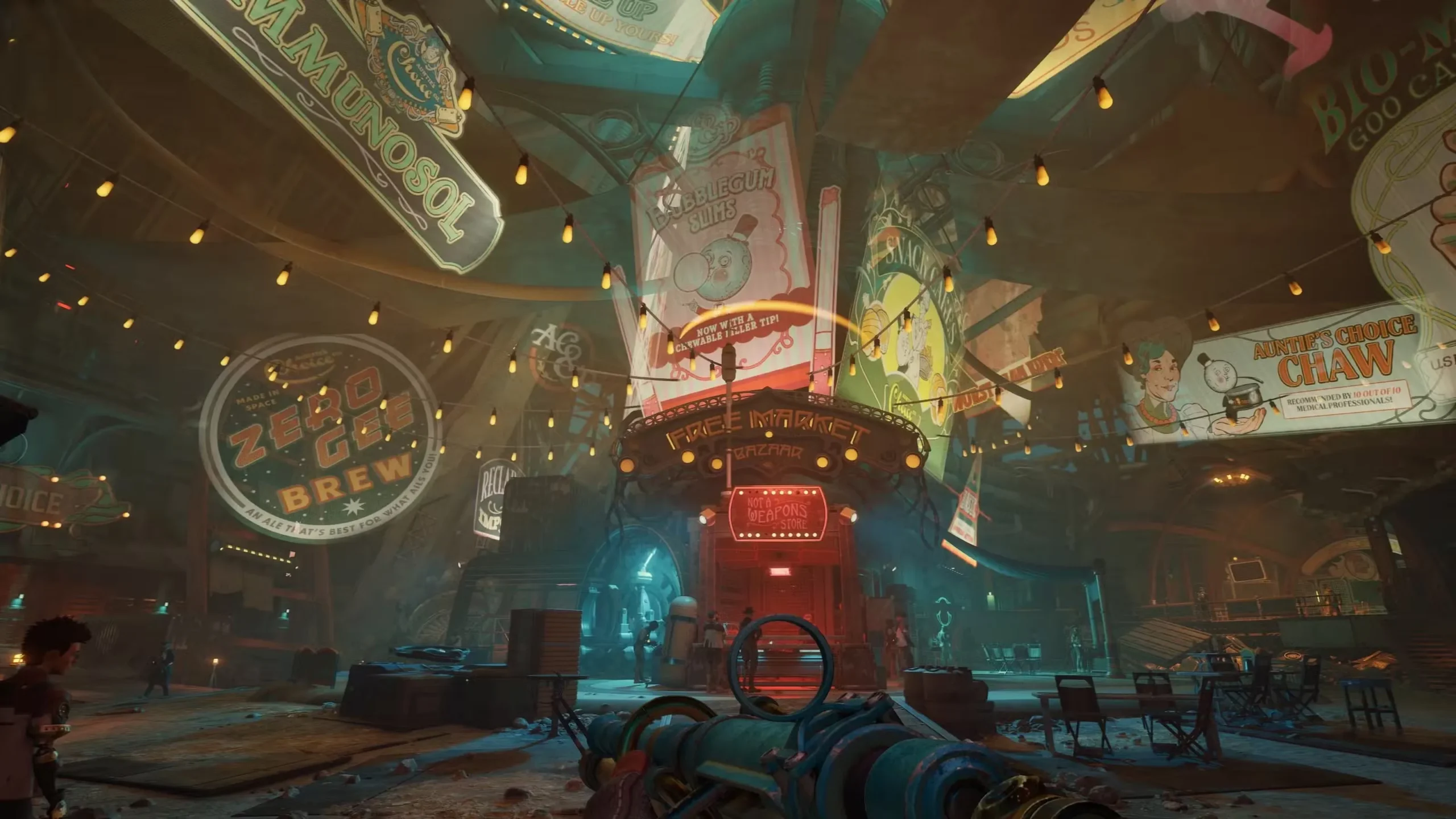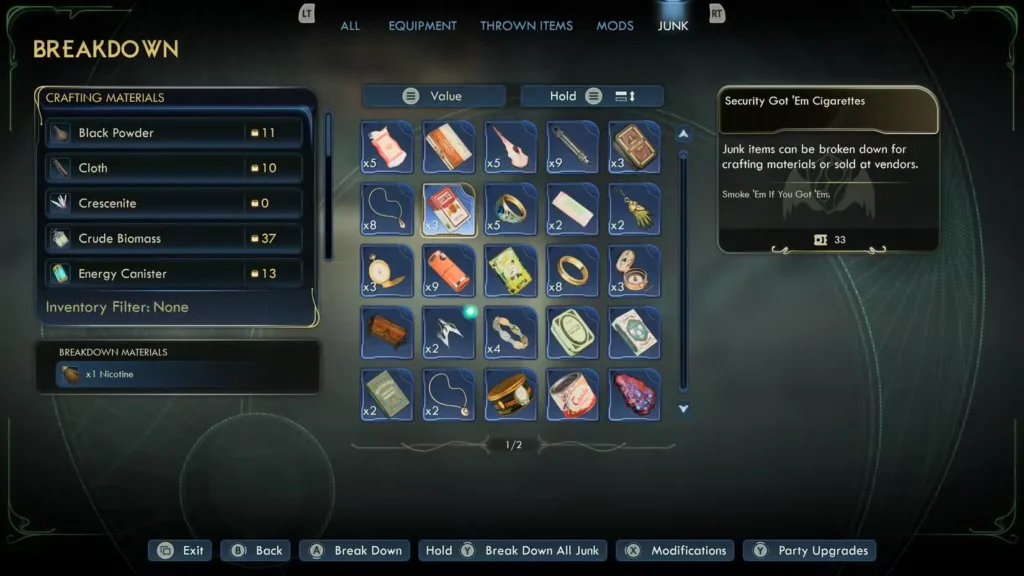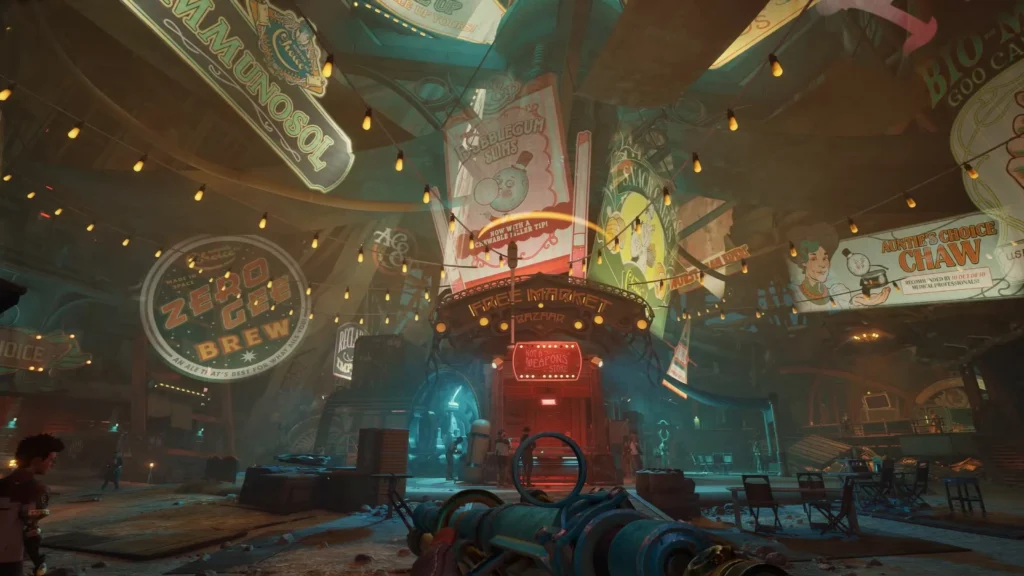
S'abonner à la newsletter
Entrez votre adresse email ci-dessous et abonnez-vous à notre newsletter

Entrez votre adresse email ci-dessous et abonnez-vous à notre newsletter
Votre source d'actualités et de guides sur les jeux

Wondering whether to sell or break down junk items in The Outer Worlds 2? Learn the best strategy for managing loot, crafting resources, and Credits to maximize your efficiency.
If you’re anything like me, your inventory in The Outer Worlds 2 fills up faster than you can say “corporate dystopia.” Between looting every desk drawer, corpse, and abandoned crate, you’ll accumulate a mountain of junk items that seem… well, kind of useless at first glance.
The game gives you two options: sell this stuff for Credits, or break it down into crafting materials. But which choice is actually better? Should you be a capitalist and cash everything in, or embrace your inner wasteland tinkerer and scrap it all?
After spending way too much time testing both approaches, I’ve got the definitive answer—and some nuance that might surprise you. Let’s break down (pun absolutely intended) the junk item economy in The Outer Worlds 2 so you can make smart decisions from the start.
Bottom line: You should break down junk items instead of selling them.
I know the Credits look tempting, especially early in the game when you’re scraping by. But here’s the reality—junk items sell for pennies, while the crafting materials you get from breaking them down are genuinely valuable throughout your entire playthrough.
Let me explain why this matters more than you might think.
This is the big one. Ammunition prices at vendors and vending machines are honestly ridiculous. Depending on your difficulty setting and playstyle, you can burn through ammo faster than a corporate executive burns through employee morale.
Here’s the math that convinced me:
See the problem? You’d need to sell a ton of junk just to buy one stack of ammo that you could’ve crafted yourself for free. And if you’re using multiple weapon types (which you should be for tactical flexibility), those ammo costs multiply quickly.
If you’re still figuring out which weapons work for your build, check out our best starting builds guide to optimize your loadout early.

Beyond ammo, breaking down junk gives you the resources to craft:
• Weapon mods – Significantly improve your firepower without buying expensive new guns
• Armor mods – Enhance survivability, especially important if you’ve taken certain negative traits
• Consumables – Health items, buffs, and utility items that can save your life
• Maintenance items – Keep your gear in top condition
The materials you get from junk—especially the less common ones—are often the bottleneck for crafting. You’ll find yourself needing specific components that aren’t easy to come by, and guess what? That random toaster you picked up might have exactly what you need.
Voici quelque chose que le jeu ne vous dit pas explicitement : junk items are terrible moneymakers.
Most junk sells for 10-50 Credits per item. That’s… not great. Meanwhile:
You’ll naturally accumulate Credits through normal gameplay. But crafting materials? Those require intentional gathering and breaking down items. Prioritize the resource that’s harder to come by.
Good question! Unlike junk, weapons and armor are actually worth decent Credits when sold. This is where your strategy should shift slightly.
If you have duplicate gear:
If you have a single piece of outdated gear:
Pourquoi cela fonctionne : Weapons and armor break down into significantly more crafting resources than junk items do. They’re also worth more Credits. So you’re not really losing out either way—you’re just choosing which resource you need more at that moment.
Conseil de pro : As you progress through the game, you’ll accumulate more gear than you can possibly use. I found myself sitting on 5+ duplicate rifles by mid-game. That’s when selling makes total sense, because you’ve got plenty to break down and your Credits could use a boost.
If you need help managing your expanding arsenal, our guide on how to get more weapon slots will be a lifesaver.

Okay, I’ve been pretty hard on selling junk, but there ARE situations where it’s the right call:
If you’re in the first few hours and desperately need Credits for something specific—maybe a crucial weapon upgrade or health increase—selling some junk won’t destroy your playthrough. Just don’t make it a habit.
Later in the game, if you’ve been diligent about breaking down junk, you might have more materials than you know what to do with. At that point, selling excess junk for bonus Credits is perfectly reasonable.
If your playstyle doesn’t involve much crafting (maybe you’re doing a melee build or focusing on stealth over combat), the value of crafting materials decreases. In this case, selling junk for Credits to buy finished products from vendors makes sense.
Still figuring out your playstyle? Our backgrounds and traits guide can help you understand which builds benefit most from crafting.
For something so important, the game doesn’t exactly make this intuitive. Here’s the quick tutorial:
1. Open your inventory (menu button, then navigate to items)
2. Find the item you want to break down in your junk or gear tabs
3. Select “Break Down” from the item menu (the specific button depends on your platform)
4. Confirm the action to receive your crafting materials
The materials automatically go into your crafting inventory, organized by type. You don’t need to worry about managing them—they’re just there when you need to craft something.
After playing through a significant chunk of The Outer Worlds 2, here’s my refined approach:
✅ All junk items (cigarettes, cups, toys, electronics, etc.) ✅ Duplicate weapons and armor ✅ Any gear you’ve outgrown that has good material yield
✅ Unique weapons/armor you won’t use (check material yield first though) ✅ Excess duplicate gear after breaking down one copy ✅ Quest items you’ve completed (if the game lets you)
🤔 Single pieces of outdated gear (sell if you need Credits, break down if you need materials) 🤔 High-value junk in early game (if you’re truly desperate for Credits)
This balanced approach kept my Credits healthy and my crafting materials abundant throughout my playthrough. I never ran out of ammo, I could craft whatever mods I wanted, and I still had enough Credits to buy the occasional premium item from vendors.
❌ Selling all your junk for “quick Credits” – You’re sabotaging your crafting economy for pennies
❌ Hoarding junk without breaking it down – If your inventory is full, you can’t pick up new stuff (including actually valuable loot)
❌ Breaking down obviously valuable gear – Check the sell price first; some unique items are worth big Credits
❌ Ignoring your crafting needs – Actually USE those materials to craft ammo and mods; don’t just accumulate them
❌ Not checking what materials you’re low on – Prioritize breaking down items that give you resources you actually need
Great question! The short answer is: not really, but it emphasizes why breaking down junk is important.
On higher difficulties:
All of these factors make crafting materials MORE valuable, not less. So on harder difficulties, breaking down junk is even more important than on normal mode.
If you’re tackling higher difficulties, make sure you’ve read our guide du débutant et what to do first guide to set yourself up for success.
Occasionally, you’ll find junk items marked as “valuable” or that sell for 100+ Credits. These are outliers, and honestly, they’re still usually better broken down for materials unless you’re in a serious Credit crunch.
The thing is, even “valuable” junk rarely sells for more than 200 Credits, which is less than most outdated weapons. And the crafting materials from these items can often be used to create mods or ammo worth far more than that 200 Credit selling price.
My rule of thumb: If a junk item sells for less than 300 Credits, break it down. If it’s more than that, consider selling it—but check what materials you’d get first.
Here’s an interesting synergy: the amazing loot you get from High Security Lockboxes often includes top-tier weapons that you’ll want to mod immediately. Guess what you need for crafting those mods? Yep, the materials from breaking down junk.
So there’s a natural progression: hunt for lockboxes → get great weapons → mod those weapons → need crafting materials → break down all that junk you’ve been collecting. It all comes together beautifully.
Look, I’m not going to tell you there’s only one “correct” way to play The Outer Worlds 2. If you want to sell everything and buy all your ammo from vendors, you can absolutely do that. It’s your game.
But after extensive testing and comparison, breaking down junk items is objectively more efficient for long-term success. The crafting materials are more valuable than the Credits you’d get from selling, and they enable a more sustainable, self-sufficient playstyle.
The Credits you “lose” by not selling junk are negligible compared to what you gain from being able to craft your own ammo, mods, and consumables. Plus, you’ll still make plenty of Credits from selling outdated gear and completing quests.
My practical advice: Break down your junk religiously, sell your outdated gear strategically, and you’ll never find yourself short on either Credits or crafting materials. It’s the best of both worlds, and it makes the game significantly more enjoyable when you’re not constantly worried about running out of ammo or going broke.
Now if you’ll excuse me, I have about 47 coffee mugs to turn into rifle ammunition. Because that’s just how The Outer Worlds works, and honestly? I’m here for it.
Related guides you might find helpful: